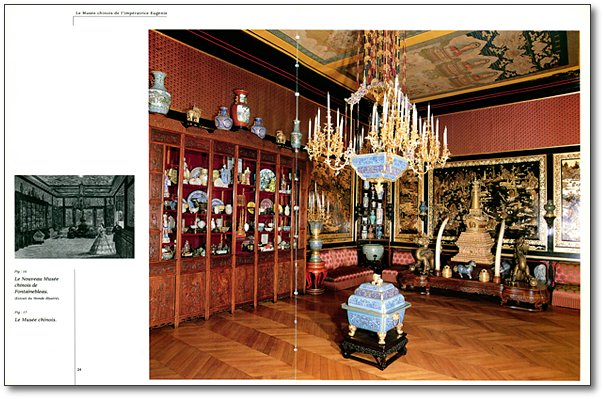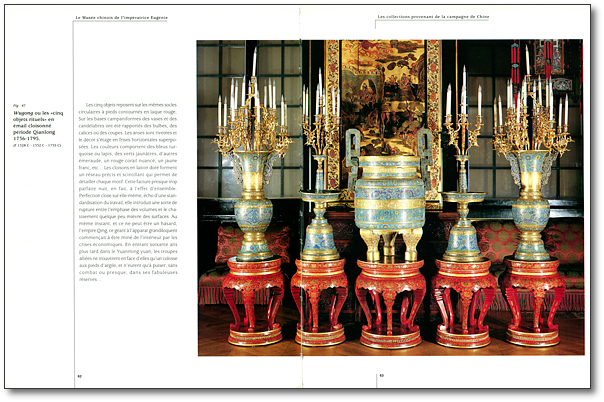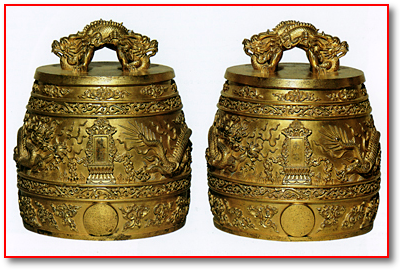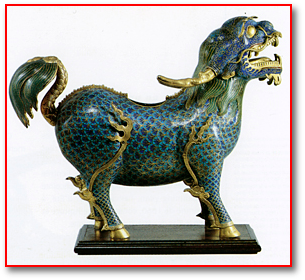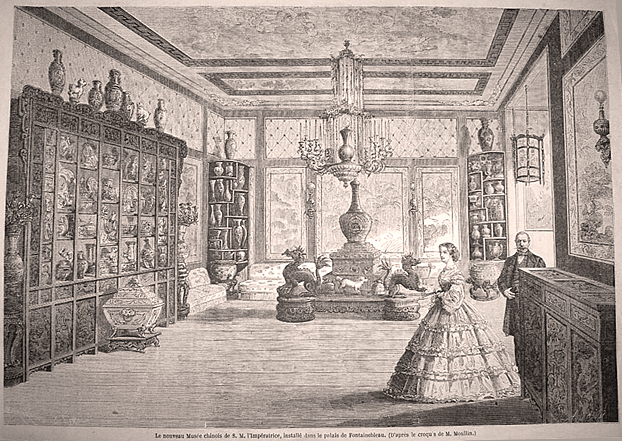|
|
||||
|
|
||||
|
|
|
|||
|
|
||||
|
|
|
|
|
|
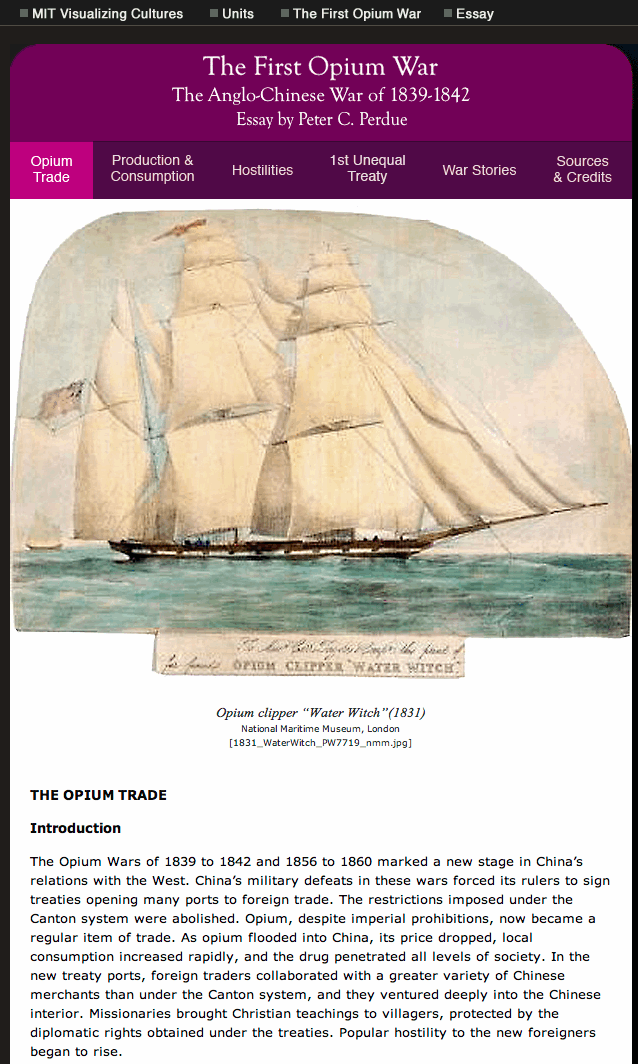






The Chinese rooms house the Empress’s original collection of jades, gold, cloisonné, lacquer, and textiles. One of the most striking displays at Fontainebleau is a set of five ritual
vessels of blue and gold cloisonné. They are pictured in the museum catalog resting on a set of five red lacquered
stools against a background of French chandeliers, which might sound culturally
discordant but in fact seems totally appropriate in the ornate and aristocratic
setting of this castle.
The 1863 illustration was juxtaposed with a photograph of one of the recently restored Chinese rooms in the 1994 catalog Le Musée Chinois de l’Impératrice Eugénie to show how closely the original installation was maintained. The luxurious
ambiance at Fontainebleau palace underscores the imperial provenance of
precious relics acquired in the 1860 sack of the Yuanmingyuan.
[1994_Musee_Chinois_p24]
Five ritual vessels from the Yuanmingyuan, pictured on pages 62-63 of the 1994
exhibition catalog, Le Musée Chinois de l’Impératrice Eugénie at Fountainebleau.
[1994_Musée_Chinois_p62-62]
Chinese objects include a blue and gold cloisonné “chimera”—a mythic animal with a lion’s body and dragon’s head—and an elegantly embossed pair of bronze bells (detail highlighted in above in
red).
Soon after the events of 1860, loot from the Yuanmingyuan began to appear as
commodities on the market in London and Paris. Between March 1861 and June
1866, more than a dozen sales were held at London auction houses. [8] Over the years, many of these objects changed hands more than once,
increasing their financial value. The availability of such prized “collector’s items” launched another phase or stage of Orientalism. Although Chinese porcelains and
designs had long been valued by the monarchs and aristocrats of Europe, and
even popularized through Chinese export-ware, in the mid-19th century the taste
for chinoiserie received a great boost from the looting of the Yuanmingyuan. [9]
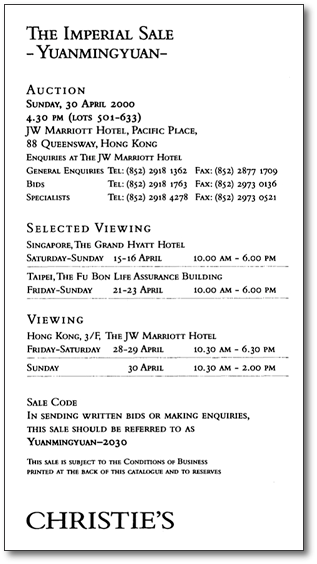
In the ensuing century and a half, items from the Yuanmingyuan—sometimes not explicitly identified as such—continued to appear on the market. The catalog of an auction at
Christie’s Hong Kong on April 30, 2000 was titled “The Imperial Sale–Yuanmingyuan,” yet only a few items were explicitly advertised with a Yuanmingyuan
provenance, probably out of apprehension that the Chinese government might
demand their repatriation.
Title page of “The Imperial Sale–Yuanmingyuan” catalog,
Christie’s Hong Kong, 2000
Christie’s Hong Kong, 2000
[2000_ImpCat]
The July 4, 1863 issue of Le Monde Illustré featured a depiction of the new Chinese museum of the Empress Eugénie at Fontainebleau.
Caption: “Le nouveau Musée chinois de S. M. l’Impératrice, installé dans le palais de Fontainebleau”, Bertrand & Lix from a sketch by Moullin.
[1863_4July_moullin]







